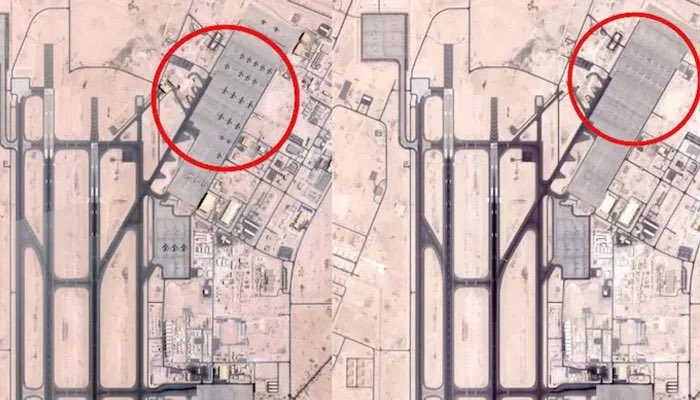
The United States has quietly withdrawn nearly 40 military aircraft from Al Udeid Air Base in Qatar, its largest airbase in the Middle East, amid escalating fears of potential Iranian strikes as tensions rise between Iran and Israel.
Satellite images from Planet Labs PBC, analyzed by multiple news agencies, show that between June 5 and June 19, the previously crowded tarmac—home to C-130 Hercules transport planes and advanced reconnaissance jets—was largely emptied, with only three aircraft visible by June 19.
The move is widely seen as a preemptive measure to protect US military assets from possible Iranian attacks, especially as Washington weighs whether to support Israel’s ongoing military operations against Iran.

US officials, speaking to Reuters on condition of anonymity, confirmed that the aircraft were removed due to their vulnerability to potential Iranian missile or drone strikes, given the base’s proximity to Iran. In addition to the aircraft, some US naval vessels have also been repositioned from the region as a precaution.
The US Embassy in Qatar has responded by restricting access to the base, citing “an abundance of caution and in light of ongoing regional hostilities,” and has urged personnel to exercise increased vigilance.
Meanwhile, public flight tracking data shows that at least 27 US military refueling aircraft, such as the KC-46A Pegasus and KC-135 Stratotanker, were redeployed from the US to Europe between June 15 and 18, with most remaining in Europe as of June 19—an indication that the US could be preparing for extended operations or repositioning assets for greater security.

Al Udeid Air Base, located near Doha and established in 1996, houses around 10,000 US troops and serves as the forward headquarters for US Central Command (CENTCOM). It has played a pivotal role in US operations across Iraq, Syria, and Afghanistan.
The current redeployment comes as US forces across the Middle East are placed on high alert, with military families offered voluntary evacuation from bases in the region due to the heightened risk of Iranian retaliation.

President Donald Trump has not yet decided whether the US will join Israel’s campaign against Iran’s military and nuclear infrastructure, but a decision is expected within the next two weeks, according to White House officials. Iran has warned that any US involvement in the conflict would trigger direct attacks on American bases in the region




.jpg)



.jpg)

.jpg)






















.jpg)



















